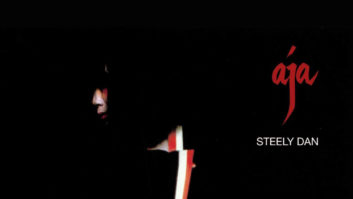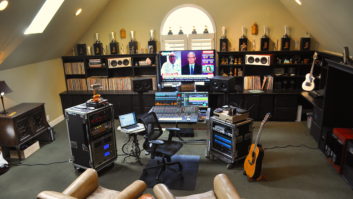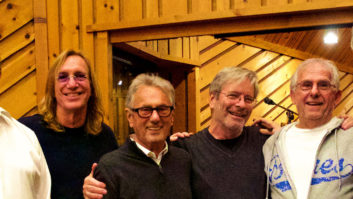A few months back in the METAlliance Report, I suggested walking the room when going into a new recording studio—but what if you’re not in a recording studio? What if the room you’re walking is an up-and-coming facility also known as the Guest Bedroom? What can you do to bring the best out of the space you’re working in?
To begin with, we are always hearing that “There are no rules,” right? Wrong! Of course there are rules—a veritable plethora of rules—but once you know the rules, you can figure out how and when to break them. The first one that comes to mind is:
RULE #33. No Parallel Walls! Well, more than likely, your home or apartment contractor didn’t get that memo, so the room you’re in has parallel walls to the left of you, parallel walls to the right of you and you’re confronted with flutter echo or low-frequency standing waves, or both. If you have a choice, pick the best room you can, but occasionally, through a rare and happy accident, your room actually sounds ok. Now maybe it’s the shelf housing all your audio awards, or maybe it’s that big old sofa along the back wall, but whatever it is, if the room sounds good, follow Rule #14.
RULE #14: If it ain’t broke, don’t fix it. The point being, listen before you begin your modifications. Try to sort out the problem areas and deal with them in a micro way without massive wholesale changes—and more importantly, decide what your goal is. Do you prefer a dead room with a capital D, or is a live room more your style? Originally, recording rooms were built with nary a thought about isolation (then again, if you’re using one mic to pick up the band, isolation isn’t really an issue). Once multitrack recording came along, suddenly the idea was total isolation. In the Sixties and Seventies, while the Beatles were getting stunning sounds in a very large Studio 2 at Abbey Road, US studios were like recording inside a pillow; isolation and separation were the buzzwords of the day.
Today, thankfully we’ve returned to sanity and, due to pioneers like George Massenburg, we now look for proper diffusion. George’s design may be a bit impractical for your studio, but it’s still one of the finest sounding rooms I’ve ever heard (except for my rooms at Right Track, of course!), and the overall concept—the idea of diffusion instead of live or dead—is a more realistic and opportune goal for a record or mix room. So, what can you do to achieve this?
To start with, let’s talk shelves: Bookshelves filled with books not only look great, but they can create an ideal diffusor by creating an “uneven” surface. You can see that concept used here in my room. Tape boxes (remember those?) or albums (and those?) make ideal diffusors. Even CDs irregularly lined up on shelves can be a great help.
Next, take advantage of architectural features like stone or brick fireplaces, windows and beamed ceilings. Hard or medium hardwoods aren’t great diffusors, especially those that have been treated with polyurethane or varnish. While wall-to-wall carpeted floors can deaden a room too much, carpeting can help tame reverberations from reflective ceilings.
OK, those are things you can do to your room, but what about when you walk into a studio where you don’t have the luxury of changing the walls and décor? Say you need to do a vocal overdub in a small, untreated vocal booth with low ceilings. Audio reflections in a small room are usually detrimental to the sound. While many of us like recording vocals or instruments in omni or figure eight, the extremely short delays created in a tiny room with low ceilings add not only an unwelcome nasality to the sound, but can create a very unpleasant comb filter effect as well. When you’re working in that kind of space and the singer or sax get louder, the unpleasantness only increases, so do what you can to minimize potential issues.
To begin with, the easiest thing you can do is to avoid the middle of the room; stand asymmetrically from all the walls. The closer you get to the center of the room, the more deleterious are the negative effects.
Low, untreated ceilings with hardwood varnished floors are a major problem. You can’t place your singer further away from the ceiling…or can you? One way is to put your singer in a chair. You can also put foam above your artist’s head, and if available, use one of the premade devices available which surround the mic with foam. Another technique (which has worked for me, by the way) is to take a pillow or mattress and place it on the floor, with the singer lying down. It looks strange, but you won’t see that on the final mix.
What if you need to record drums in a small space? As I discussed in my “walk the room” column, you start by finding the room nodes that work best for you; after that, your creativity needs to take over. Build a tunnel for the bass drum mic—this keeps the bass drum big and present while keeping it from overwhelming the room. Other techniques include taping up the brass and/or miking the overheads from underneath. This keeps the ceiling reflections from combing the audio.
If you know you will have access to a large room before or while mixing, the old standby of sending a very well-damped kit into a large room and re-miking still can work wonders.
In the end, use your ears in the room and through the mic. Move things, add things, subtract things, rearrange positions. Start with the physics of the room and don’t depend on that $99 plug-in to solve the problem. Nothing works quite like that three-pound mass of tissue between your ears.
Multiple Grammy-winner Frank Filipetti’s credits include Number One singles such as Foreigner’s “I Want to Know What Love Is” and “I Don’t Want to Live Without You” (which he also produced), KISS’ “Lick It Up” and The Bangles’ “Eternal Flame.” He’s worked with acts ranging from Korn and Fuel to Barbra Streisand and Elton John, and has also produced, recorded or mixed albums for Carly Simon, George Michael, Dolly Parton, Rod Stewart, Luciano Pavarotti and James Taylor, among many others.
METAlliance • www.metalliance.com
The METAlliance—Al Schmitt, Chuck Ainlay, Ed Cherney, Elliot Scheiner, Frank Filipetti and George Massenburg, along with the late Phil Ramone—with the dual purpose of mentoring through “In Session” educational events and to convey to the audio professional and semi-professional the group’s choices for the highest quality hardware and software, by shining a light on products worthy of consideration through a certification process and product reviews in this column. The METAlliance Mission: to promote the highest quality in the art and science of recording music.







